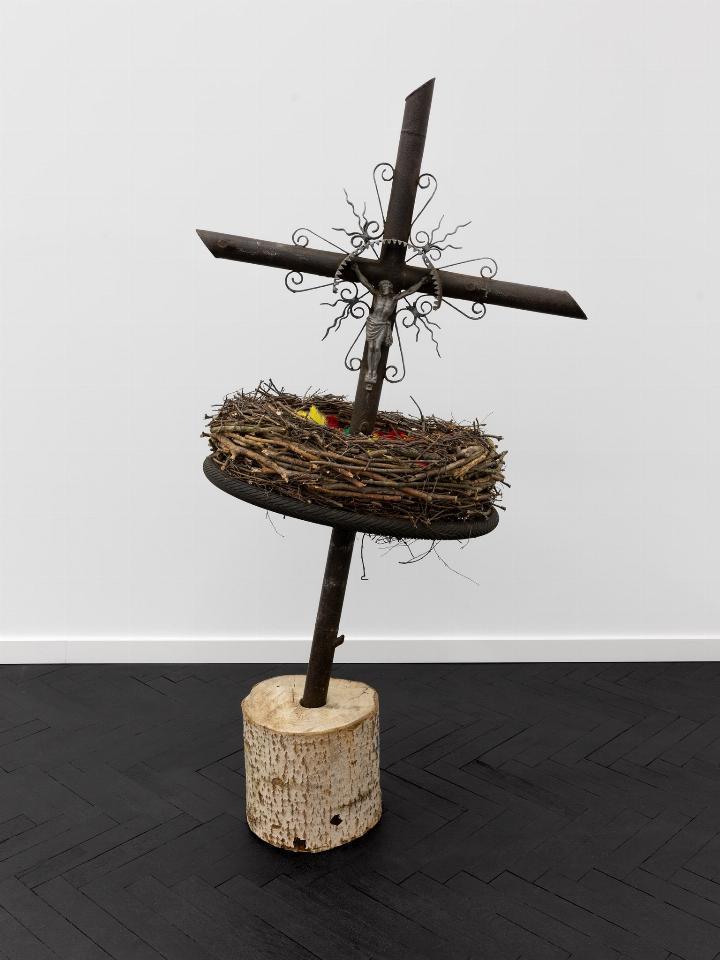Daniel Rycharski
Nest #1
Daniel Rycharski, Nest #1, 2022wood, metal, rainbow-coloured feathers, h 182, ⌀ 67 cm
Collection II of the Arsenal Gallery in Białystok. Work purchased by the Arsenal Gallery in 2023

Daniel Rycharski’s Nests refer to the spiritual homelessness he experiences. Rycharski has repeatedly emphasised that his works are the product of a self-awareness determined by his identity as an inhabitant of a village and a visual artist, his deep faith, his sexual orientation and his membership in the LGBTQ+ community. With their colourful feathers woven in, strung on metal hoops and set on cast-iron crosses driven into tree trunks, his Nests directly allude to the issue of the relationship between non-heteronormative sexuality and Catholicism. By means of his work, Rycharski shows that these two aspects of life are only seemingly at odds with each other and that they can jointly shape a person’s identity. His actions document his attempts to find himself in the Catholic community; attempts that ended in failure because, as he concluded, “the Church will not change”. Rycharski has moved to a position of “irreligious Christianity”, of spiritual development outside the Church as an institution. As he stated, he found a remedy for spiritual homelessness in the space of the countryside, of folk culture.
Rycharski draws on forms and objects that are part of the rural landscape. The crosses that are the “backbone” of his Nests originate from it. Rycharski is consistent in his viewing of the Polish countryside; he has completed and exhibited many important works in his home village of Kurówko and the nearby town of Sierpc. He follows and comments on the social and economic processes that have conditioned changes in the countryside. These observations make him lean towards the theory that rural traditions are coming to an end. By moving his activities to the countryside, he builds a bridge between the offers of big-city galleries and the space of culture available outside urban centres. He refers to his art as new folk art, somewhat akin to that defined by the intelligentsia at the turn of the nineteenth century.
According to Rycharski, his Nests also address the issue of the disappearance of certain bird and animal species from the countryside. EU regulations, for example, do not allow a variety of bird species to be kept under the same roof. This has caused a decline in synanthropic species, such as swallows, which make nests attached to buildings in rural homesteads. According to Rycharski, Nests is a work about the impossibility of dialogue between the LGBTQ+ community and the Church, as well as about the village’s gradual loss of its former specificity.
Izabela Kopania
translated from Polish by Klaudyna Michałowicz

PLAN YOUR VISIT
Opening times:
Thuesday – Sunday
10:00-18:00
Last admission
to exhibition is at:
17.30